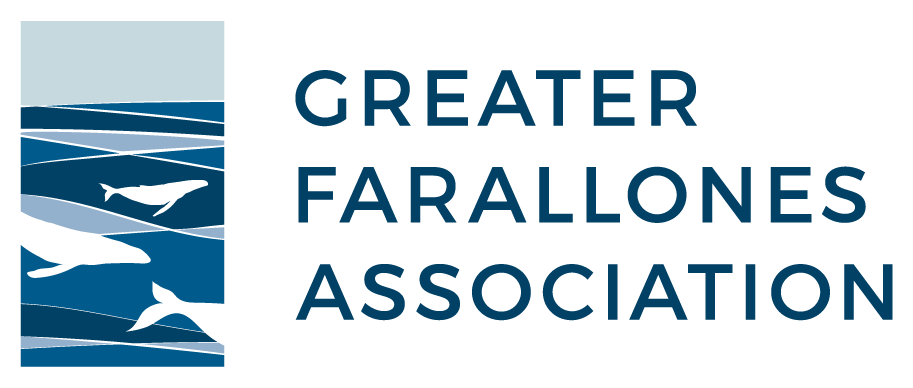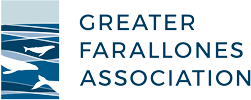Ships Reduce Speeds to Protect Whales and Air Quality: Results from the 2022 Protecting Blue Whales and Blue Skies Program

California’s incredibly rich waters are home to seasonal feeding grounds and aggregation areas for many species of whales, including endangered blue, fin, and humpback whales. The state’s four national marine sanctuaries – Greater Farallones, Cordell Bank, Monterey Bay, and Channel Islands – help to ensure these waters remain healthy and productive for the benefit of wildlife and communities, including whales.
The state is also home to a number of busy ports, where large commercial ships load and unload cargo. These commercial ships transit up and down California’s iconic coast transporting goods and products to and from the state’s communities through the same rich waters where whale populations feed and aggregate. Unfortunately, this overlap in whale habitat and shipping routes results in adverse impacts to whale populations, namely through ship strikes.
Ship strikes are a major threat to whales around the world and, in particular, to the recovery of threatened and endangered whales – such as the blue, fin, and humpback whales that frequent the U.S. West Coast. Between 2007 and 2022, there were 52 recorded fatal ship strikes on endangered whales, and researchers estimate that these reported incidents represent a small percentage of the total number of ship strikes occurring, as most incidents likely go unobserved due to whales sinking after death.
To deal with this issue, for over a decade, the National Oceanic and Atmospheric Administration has requested that large vessels reduce speeds while transiting in critical whale habitat along the California coast – these requests are known as voluntary vessel speed reduction (or VSR) requests.
In 2014, the Protecting Blue Whales and Blue Skies (BWBS) Program was created (and expanded to the San Francisco region in 2017) to help mitigate the risk of fatal ship strikes using positive press and recognition to motivate large vessel traffic to reduce speeds and cooperate with the federal requests. For the past three years, the VSR requests and the BWBS program have run from May through December during peak whale migration times. By reducing ship speeds, both ships and whales have more time to avoid each other and prevent a collision. In addition, reduced speeds contribute to reductions in harmful air emissions and ocean noise – further promoting a healthier ocean and healthier communities on land.
The BWBS program released the results of its 2022 VSR season earlier this year. In the 2022 season, twenty-three global shipping companies voluntarily reduced their speeds for nearly 270,000 nautical miles, lowering the risk of ship strikes from participating vessels by 44%. These reduced speeds also contributed to reductions of over 32,000 metric tons of greenhouse gasses, 921 tons of NOx (a precursor to smog), and decreased ocean noise by 4.6 decibels per transit, on average, in southern California waters.
Managed by partners at the California Marine Sanctuary Foundation, the Protecting Blue Whales and Blue Skies is a collaborative effort by Ventura County Air Pollution Control District; Santa Barbara County Air Pollution Control District; San Luis Obispo County Air Pollution Control District; Monterey Bay Air Resources District; Bay Area Air Quality Management District; Channel Islands, Greater Farallones, Cordell Bank, and Monterey Bay national marine sanctuaries; The Volgenau Foundation; National Marine Sanctuary Foundation; Greater Farallones Association; Environmental Defense Center; Point Blue Conservation Science; Starcrest Consulting; and Scripps Whale Acoustic Laboratory/Scripps Institution of Oceanography.
For more information, visit www.bluewhalesblueskies.org.

